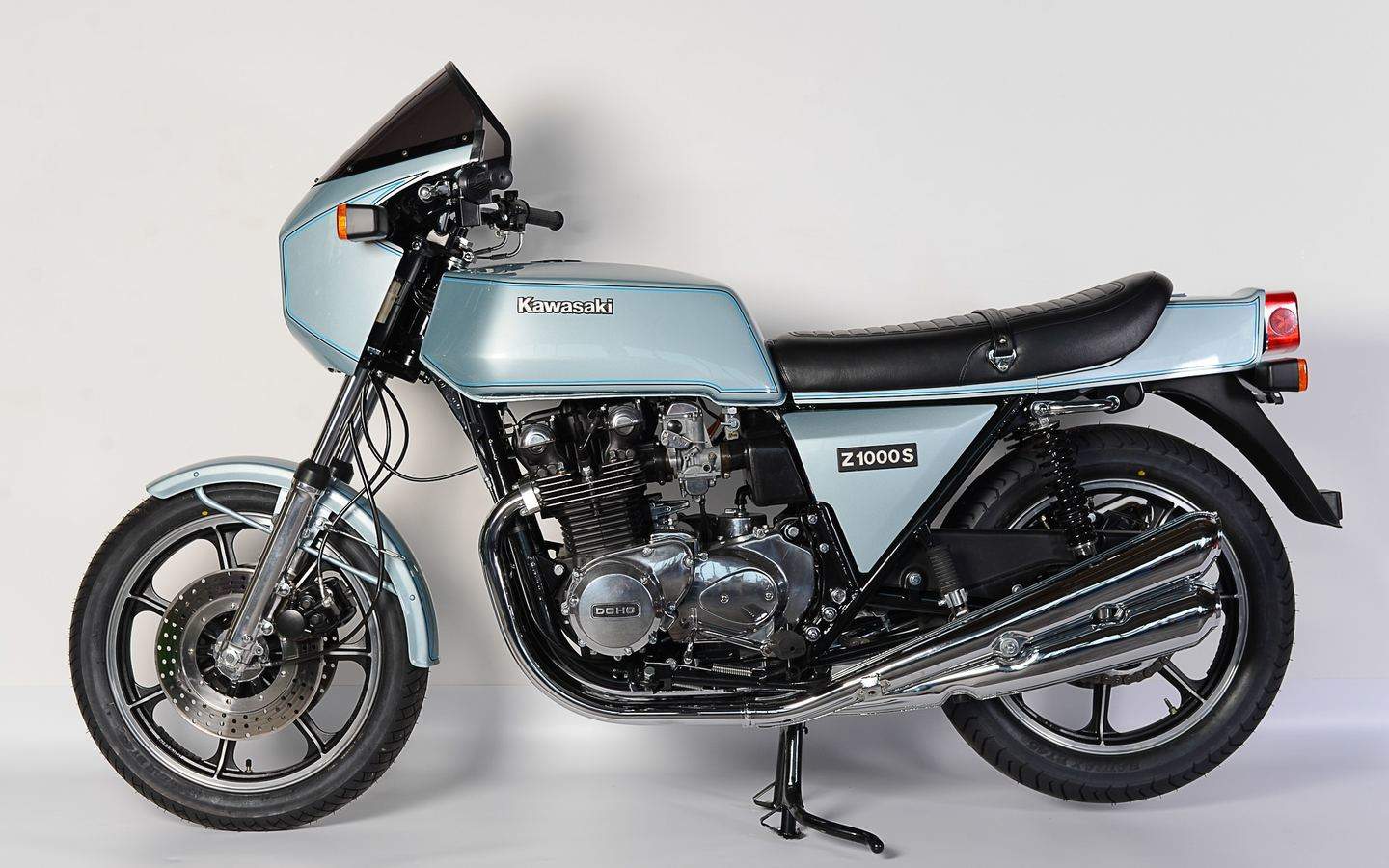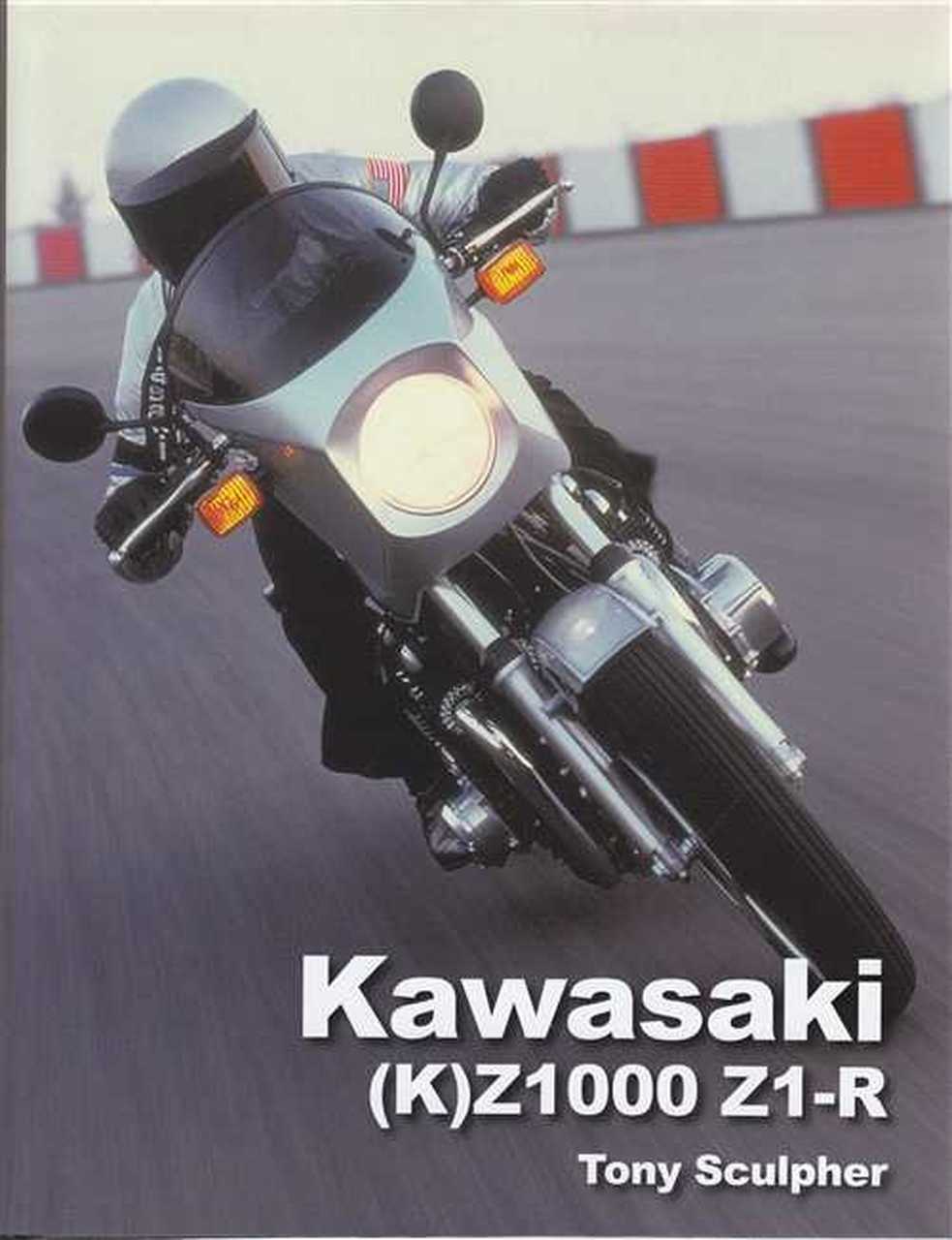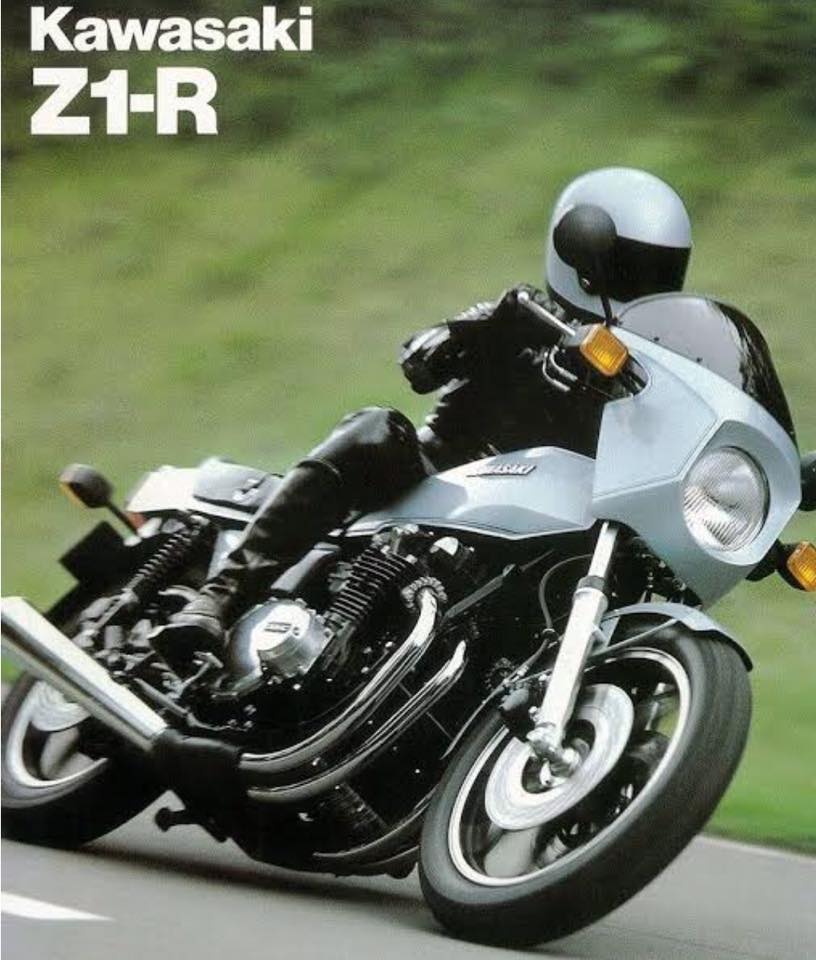Motorcycle Investor mag
Subscribe to our free email news
Buyer guide – Kawasaki Z1-R

Rolling Zedline
by Guy ‘Guido’ Allen
(October 2020)
(See the 1978 road test from Classic Two Wheels)
Kawasaki's dramatic lines breathed new life into an ageing design and produced a surprising number of variants
It's arguably a trick as old as the motor industry – that is, when you haven't got brand new product to show off, you take a good hard look at what's in the cupboard and dress it up in a new suit. Cyncial? Maybe...
Kawasaki's 1972 launch of the Z1 900 had famously taken up where Honda's ground-breaking CB750-Four left off (see our 50 years feature) and helped to popularise the whole four-stroke in-line four platform. You didn't need to be Nostradamus to realise the design, in relatively short order, would soon be coming under fire from rival makers.
For example, Honda by 1975 had put a fascinating shot across the bows with its more touring-oriented GL1000 Gold Wing (see our buyer guide).
And it was the mid-seventies that the Z1-R was effectively born. The inspiration is credited to Kawasaki America execs Wayne Moulton and Graham Kirk, along with Japanese colleagues T Takahashi and H Otsuki. Chris (aka 'Cowboy Chris') Kurishima, who worked in the company's California studio, penned the final lines.
At the heart of the 1978 Z1-R was a mildly updated version of the Z1000 engine, running 1015cc and a bank of 28mm VM Mikuni carburettors, claiming 90 horses. Quite a bit of punch for the day and even now more than enough to give the thing plenty of performance. A talking point was the factory four-into-one exhaust system.
In the hope of taming a useful if not huge performance lift over its predecessors, the Z1-R frame picked up additional bracing – notably around the steering head – plus upgraded bearings for it and the beefed-up swingarm.
Otherwise, the technology was unsurprising, though the new model showed off a fresh set of 18-inch cast wheels for the marque and came with a few niceties. Most obvious among the latter was the dramatic fairing (the first factory-mounted unit on a Kawasaki production bike), with a pair of guages mounted in the nacelle, giving the rider a much more 'exotic' view than they might be used to.
Suspension spec had been revised for this model, which ran a trio of disc brakes with single-piiston calipers up front and a dual-piston item on the rear.
And the end result? Stylish and fast, it copped plenty of interest and attention, doing what a flagship motorcycle should do for a brand – which is give people reason to walk into the showroom.
It was unquestionably reliable and an example did get headlines for being punted down a dragstrip for a standing quarter time of just under 12 seconds. Admittedly that was in ideal conditions with a pro at the handlebars, but it was nevertheless a spectacular time for the day.
Criticisms? It had a mixed reputation on the handling front, particularly for getting twitchy over ropey surfaces. However the other main cause for complaint was the small 'coffin shape' (as it was described at the time) fuel tank, which held a measly 13 litres.

Sales varied from one country to another, but the MkI version was a solid rather than a runaway success. It did however lead to several variants. For example a distinct model was developed in Germany, called the Z1000S (above) using a mix of Z1-R styling, four Z1 mufflers and a larger 22 litre fuel tank that was adapted across other models.

For 1979-80, we got to see a Z1-R MkII (above), distinguished by arriving in black (or deep red in some markets) with gold pinstriping. It also ran an updated engine claiming 93 horses that was shared with the Z1000 MkII (below). Its exhaust system was now a four-into-two.

The MkII also came with a bigger fuel tank and had switched to a 19-inch front wheel. We suspect the latter move may have been done in an effort to help settle down the grizzles about flighty handling.
Perhaps most famous of all the Z1-R variants were the TC turbos. This was done out of California in partnership with the American Turbo Cycle Corporation, which gave Kawasaki a perhaps thin veil of deniability for the consquences.
Essentially your standard Z1-R was fitted with a kit developed by American Turbo-Pak, centred around a Rayjay puffer. Gone was the bank of four carbs in favour of a single 38mm Bendix, though the engine kept its standard 8.7: 1 compression.

The standard instrument cluster scored a giant boost guage (Bonhams pic, above), while the left side of the bike hosted the giant single exaust. Reports on the available horsepower vary. We've seen claims of up to 145 horses, if you were brave enough to wind up the wastegate that far. Out of the showroom, they were more like 110 horses, which still represented a very big jump over stock.

Incredibly, some 500 of these things were sold, despite the fact they cost almost 50 per cent more than a stocker, and you signed an agreement cancelling any warranty. Half those were in the orignal silver livery, while the second batch wore distinct black-based graphics (Bonhams pic, above) designed by Rollin 'Molly' Sanders of Molly Designs.
While it has no particular race heritage upon which to hang its hat, and nor was it at the cutting edge of motorcycle development for its day, the Z1-R has plenty of collector interest. The overall trend has been for value to go up over the long term, though there are often ups and downs along the way.
Perhaps not surprisingly, a real TC turbo in the wild 'Molly' graphics is top of the value tree. We've seen the turbos sell for Au$12-29,000 (US$8-21,000, GB£6-16,000) on the international market over the last five years.
Normally-aspirated Z1-Rs can be found in the Au$10-18,000 range. However you may need to be patient as, in Australia at least, these things only pop up sporadically. Your best hope may well be an American import.
If you do find a decent one, you'll find parts support for the mechanical side of things is excellent. Even the turbo isn't much of an issue, as there are plenty of rebuilders out there. Good bodywork and trim unique to the model will be more of a challenge.
What's to like? The engines (on normally-aspirated bikes) are as tough as old boots and a halway decent one is likely to outlive its owner. Sure the handling didn't win universal praise day back in the day, and the brakes would now seem a bit gothic, but it will nevertheless be a quick, dependable and thoroughly enjoyable classic ride.

Recommended reading
Kawasaki (K)Z1000 & Z1-R by Tony Sculpher, Crowood Motorclassics (above – no longer in print, but available)
See the 1978 road test from Classic Two Wheels (below)

Kiwi turbos
Tony Sculpher, author of the Zed book shown above, tells us three Z1-R TCs were imported to New Zealand and, at the time, cost a phenomenal amount of money – perhaps somewhere in the region of NZ$10,000.

Specifications
Kawasaki Z1-R MkI
ENGINE
Type: air-cooled in-line four with two valves per cylinder
Bore and Stroke: 69.4 x 66mm
Displacement: 1015cc
Compression ratio: 8.7:1
Fuel system: 4 x 28mm VM series Mikunis
TRANSMISSION
Type: 5-speed constant mesh
Final drive: chain
CHASSIS & RUNNING GEAR
Frame type: Twin-loop steel
Front suspension: 36mm fork
Rear suspension: Twin shocks, preload adjustment
Front brakes: Twin single-piston 296mm discs
Rear brake: Twin-piston, 290mm disc
DIMENSIONS & CAPACITIES
Dry weight: 245kg
Seat height: 815
Fuel capacity: 13lt
PERFORMANCE
Max power: 90hp (67kW) @ 8000rpm (93hp-70kW on Mk II)
Max torque: 85Nm @7000rpm
Top Speed: 220km/h
PRICE WHEN NEW – Au$3095 plus ORC
Good
Fast for its day
Unusual
Collectible
Not so good
TC models should be verified
-------------------------------------------------
Produced by AllMoto abn 61 400 694 722
Privacy: we do not collect cookies or any other data.

Archives
Contact



